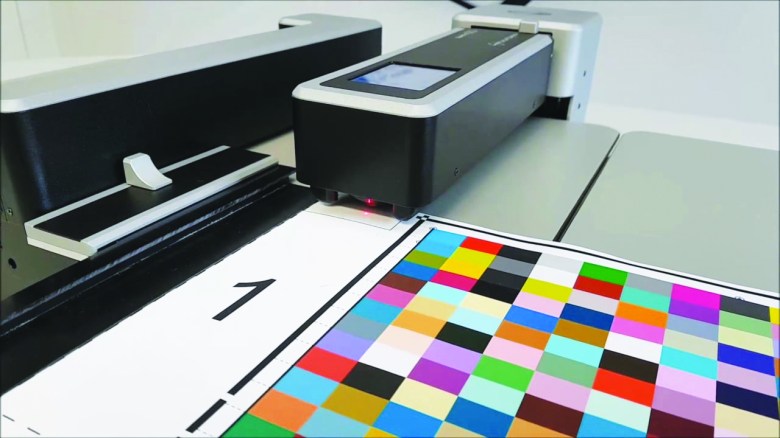
Successfully turning colourful design into colourful print requires accurate colour management.
Never an easy task for print companies.
Customers want print companies to repeat the same colours that they printed a year ago. More than that, in these days of multi-media campaigns, many customers want printers to deliver the same colour across different media – printed on different technologies.
It also doesn’t help that the customer also expects the print jobs to arrive the same day.
The problem that operators face comes from the fact that a colour system set up for their offset press simply won’t work on an inkjet or toner printer. When you have promised the same colours for a run of business cards; soft signage posters; rigid wide format; and personalised direct mail, you don’t want to disappoint your client.
Despite the fact that many digital presses have certification to meet the ISO 12647 standards, you can’t always guarantee your press will give you the matching colour without the operator completing a manual change.
It used to be even more difficult, especially with offset printing. Colour management once entailed a number of tasks that took considerable time like fingerprinting a press with test charts, otherwise you couldn’t guarantee the colour accuracy. The situation worsened when operators needed to make changes to the job such as using different substrates and inks.
But colour management technology has improved markedly, thanks mainly to advances through software.
A number of companies offer application software that will drive successful colour management through your printer and they can provide advice on which software suits your needs.
For some, the Holy Grail of print colour management resembles consistent colour across the print shop floor. That means achieving the same colour across different devices and technologies. While that doesn’t look likely in the near future, we see several companies attempting to help print businesses achieve consistency.
Profiling
An accurate colour management system transforms data encoded for one device (such as scanner RGB) into that for another device (such as printer CMYK) in such a way that it reproduces on print the same colours as those scanned.
You will find that everyone talks about an ICC profile. The International Colour Consortium (ICC) comprises a group of interested companies that promote the use and adoption of open, vendor-neutral, cross-platform color management systems.
The ICC profile helps you to obtain the right colour reproduction when you input images and print them by defining the relationship between the digital counts your device receives, or transmits, and a standard colour space. It helps to translate between the RGB colour spaces used at the design stage and the CMYK colour spaces used in printing.
The profile you have for your devices lets you combine them so that you obtain the correct colour as you get images and print them.
The application software that drives your press will deliver the ICC compatibility you need. By using the ICC profile that conforms to the ICC specification, you can exchange profiles correctly interpreted by other users. The two main types of profiles, source (input) and destination (output), comprise data that relates the device co-ordinates to those of the standard colour space defined by ICC.
Technology advances
Across the main printing technologies, approaches to colour management varies as needs must.
Offset printing still requires a physical proof in most cases, though online proofing has become more common. Physical proofing needs controlled viewing conditions involving monitors and neutral backgrounds as well as strict lighting and expertise and knowledge about aspects of the process
such as colour temperatures.
Digital printing using profiling and conversion, alongside a software application linked to the print engine, has become the norm and the accuracy continues to rise. The major equipment suppliers have built media profiles for their presses so operators can make adjustments on the fly.
The next obvious advancement has seen colour management as part of a cloud-based software solution. It works well too. As with any technology, different companies have formed alliances to bring their solutions in line, while others have sought to keep their solutions proprietary.
However, as colour management increases its use of software, we can expect to see greater automation. Computer power continues to increase so the promise of artificial intelligence moving into the area of colour management, and the associated rapid advances that will come from algorithmic growth, indicates a solid future for colour accuracy.
Comment below to have your say on this story.
If you have a news story or tip-off, get in touch at editorial@sprinter.com.au.
Sign up to the Sprinter newsletter
